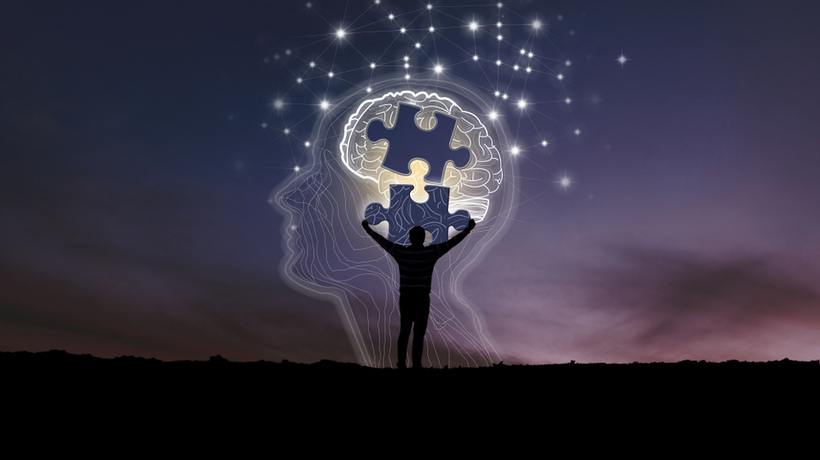Blended Learning And The Forgetting Curve
Why is it that, as adults, we find it difficult to recall a page from the training manual that we read just yesterday, whereas children can remember scenes so well from cartoons and films seen long back?
I wondered about that once, and that led me to a 2010 study [1], which found that children aged 12 and below, perceive the world using separate sensory stimuli, whereas adults combine different stimuli to make a holistic sense of the world. That made me ask, “Why are we not using different sensory inputs to help the learners ‘learn’ instead of simply ‘read’?”
According to philosopher John Locke’s theory of "Tabula Rasa," children’s brains are like clean slates, capable of taking in and retaining any and all information presented to them. The adult cognitive system, on the other hand, responds differently to different types of stimuli, making it counterproductive to try and train them using a single strategy or method.
In the absence of constant reinforcement, learners will forget 70% [2] of what they have learned in less than a week. Luckily, blended learning is here to make the best use of those individual learning styles and help learners retain more of their learned knowledge.
Continue reading to learn how blended learning leverages different learning styles and helps flatten the forgetting curve.
What Is Blended Learning?
A fusion of both in-classroom and online training strategies, blended learning is the perfect cocktail for your corporate training needs. While learners do attend real-time, ILT (Instructor-Led-Training) classes, they also have the option to access materials and resources on the same course online. Not only is blended learning more efficacious than either of the strategies considered individually, but it has also proved to be a mighty helpful buddy for trainers, especially when "working remotely" is the new normal.
But wait, I’m also aware that you are more interested in the "Flattening the Curve" angle. With blended learning, now you too can straighten the curve.
Uh…What Curve?
No, I am not talking about the COVID-19 infection curve, but rather the forgetting curve brought forth by German psychologist Hermann Ebbinghaus. The forgetting curve is a progressive decline in memory retention when no attempt to retain that memory is actively made. In his book The Seven Sins of Memory [3], author Daniel Schachter equates the forgetting curve with the phenomenon known as "transience," the decreasing accessibility of memory over time.
The forgetting curve affects learners on a large scale and can be quite detrimental for the virtual training [4] of your workforce. Let’s face it, you wouldn’t like to go through page after page of a guidebook, reading and taking notes, only to realize an hour later that you have already forgotten half of what you learned. Ouch!
And What About Learning Styles?
VAK (sometimes also called VARK) refers to the three dominant learning styles: Visual, Auditory (sometimes Reading), and Kinesthetic. There are learners who love to learn by reading, others who learn while listening to audio or watching a video, some even like to have tactile, hands-on experience of the learning subject matter.
Studies over the years have shown that not all individuals learn in the same way and with the same efficiency. Making an auditory learner study a 20-page text document will yield poorer results than making them listen to a 15-minute podcast on the same topic.
So, How Do We Flatten The Curve With Blended Learning?
Ebbinghaus’ forgetting curve, apart from telling us how much information the learner will retain the next day, also gives us the most basic fact that learning needs to be reinforced. Remember that learning (anything) is a process and not a singular event. That process is made up of a string of actions performed by both learners and trainers in order to make the entire learning process effective.
Blended learning is an amalgamation of diverse learning resources because it consists not only of in-person ILT but a variety of eLearning strategies and methods, one benefit of which is its ability to touch upon different formats of instructional delivery. Each type of delivery addresses a specific learning style. Together, they ensure that learners retain more than what they normally would, which happens to be the focus of this article.
Let’s take a look at how blended learning leverages the understanding of learning styles to help flatten the forgetting curve.
Instead of a single monotonous training method, blended learning, with its assortment of ILT and eLearning strategies, makes it possible to engage and retain learners’ attention. Enhanced attention to any topic automatically implies that the learner is more involved with the topic, and the chances of that memory being retained also go up.
Attention span can be considered the central element, connecting the learning style and the ability to remember. For someone who loves to watch Nat Geo wildlife documentaries, talking about Siberian cranes after reading a textbook is much tougher than recalling David Attenborough’s voice explaining flight patterns and routes that the birds take during their migration. The things we prefer doing attract and engage more of our attention than things that we don’t necessarily like but do just because they need to be done.
Learners globally also find it tedious to read fifty pages or go through twenty slides all at once. However, if you change that to a 10-slide presentation followed by a small video, and end it with a comic strip (or a popular meme), your learners’ attention spans will last longer simply because every time the mode of information delivery is changed, the learner’s attention resets to the new mode.
Dr. Gemma Briggs, a lecturer of psychology at the Open University, claims in a study that the attention span is highly dependent on the task being performed. Providing learners with a variety of engaging learning resources not only revives their attention at strategic intervals but also helps combat the forgetting curve by helping retain more.
Learners also learn better if a topic is made available in an innovative manner. Let’s look at a scenario where employees need to be trained on a new product that is being unveiled. Think about what you can do with a VR or AR simulation of the product itself as supporting material after a classroom session.
Test your learners’ level of knowledge on the product, then provide them with learning resources in the form of something more interactive (like an AR simulation of the product). Which one do you think your learners will remember better: reading about a new product or experiencing it virtually?
Melbourne-based neuropsychologist Jacqueline Anderson cites 3 reasons behind the loss of attention and memory [5] in adults:
- The intensity of a cognitively demanding lifestyle (all work and no rest gives Jack a dull brain)
- Age-related neuropsychological changes (as the brain grows older, it loses certain neural connections)
- Emotional distress (anxiety, stress, sadness, and depression can negatively affect attention, and hence, memory)
What’s The Catch?
Like most major claims, research on learning styles also has its opponents. In a 2009 journal article [6], Harold Pashler and company found scant experimental evidence to support the claim that presenting instruction according to the learning styles of learners is more effective in helping them retain information. Further studies from cognitive and neurological perspectives have also tried to differentiate learning styles from actual learning outcomes.
Fortunately, there are two caveats of this claim, thankfully tipping the scales in our favor:
- Firstly, most research on learning styles takes the in-classroom, ILT perspective where the instructor modifies the classroom strategies to meet a specific set of learning styles.
- Secondly, the choice of using a learning style is quite personal and works best when learners have the freedom to learn using their own style at their own time and pace.
Do you see where I am going with this? Maybe using a single training strategy is not such a promising idea after all. Different people prefer learning differently, some read, some listen to audiobooks, and some listen to audiobooks while reading. The use of learning styles never follows any textbook pattern, and hence, providing the opportunity to learn in the way the learner prefers leads to the best learning outcomes.
Think of how vividly you remember something stunning, sudden, and totally unexpected (maybe your first visit to Mount Rushmore, your first date, or something rather terrifying), even after many years. That shows that the ability to retain and recall a memory is directly related to how impactful the individual’s first contact with the information/event was.
Therefore, the more engaging and intuitive you make the blended learning experience, the better the learner will be able to retain the information from it. This in turn helps "flatten" the forgetting curve.
References:
[1] Children and adults see the world differently, research finds
[4] Learning Management Systems and Virtual Classrooms: Will the Twain Ever Meet?
[5] Memory and attention difficulties are often part of a normal life
[6] Learning Styles: Concepts and Evidence










